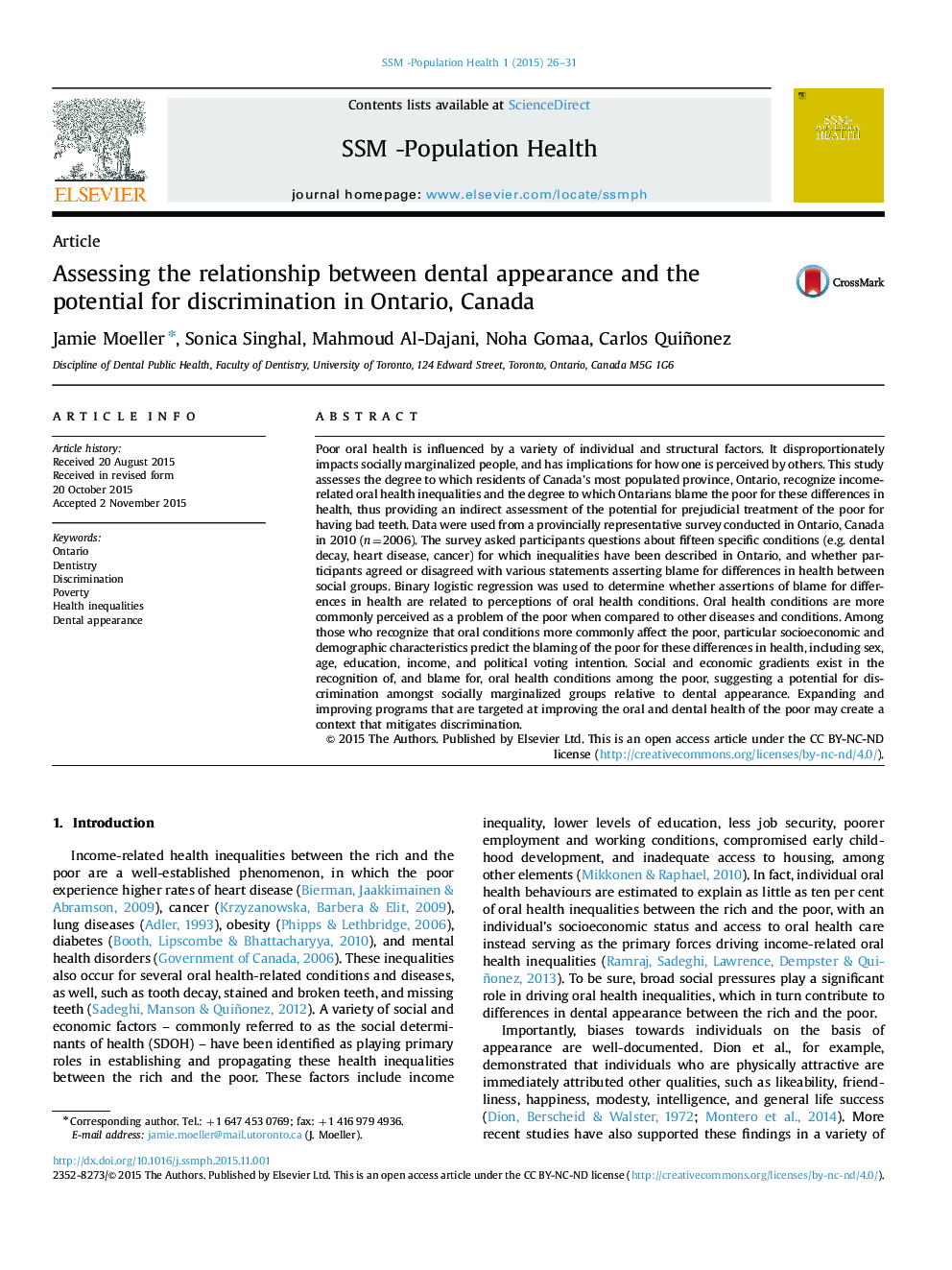| Article ID | Journal | Published Year | Pages | File Type |
|---|---|---|---|---|
| 1092376 | SSM - Population Health | 2015 | 6 Pages |
•Poor oral influenced by a variety of individual and structural factors.•We provide an indirect assessment for prejudicial treatment of the poor for having bad teeth.•Oral conditions are more commonly perceived as a problem of the poor than are other diseases.•Socioeconomic gradients predict a potential for discrimination against the poor due to their teeth.•Our findings support expanding programs to improve the oral health of the poor.
Poor oral health is influenced by a variety of individual and structural factors. It disproportionately impacts socially marginalized people, and has implications for how one is perceived by others. This study assesses the degree to which residents of Canada’s most populated province, Ontario, recognize income-related oral health inequalities and the degree to which Ontarians blame the poor for these differences in health, thus providing an indirect assessment of the potential for prejudicial treatment of the poor for having bad teeth. Data were used from a provincially representative survey conducted in Ontario, Canada in 2010 (n=2006). The survey asked participants questions about fifteen specific conditions (e.g. dental decay, heart disease, cancer) for which inequalities have been described in Ontario, and whether participants agreed or disagreed with various statements asserting blame for differences in health between social groups. Binary logistic regression was used to determine whether assertions of blame for differences in health are related to perceptions of oral health conditions. Oral health conditions are more commonly perceived as a problem of the poor when compared to other diseases and conditions. Among those who recognize that oral conditions more commonly affect the poor, particular socioeconomic and demographic characteristics predict the blaming of the poor for these differences in health, including sex, age, education, income, and political voting intention. Social and economic gradients exist in the recognition of, and blame for, oral health conditions among the poor, suggesting a potential for discrimination amongst socially marginalized groups relative to dental appearance. Expanding and improving programs that are targeted at improving the oral and dental health of the poor may create a context that mitigates discrimination.
